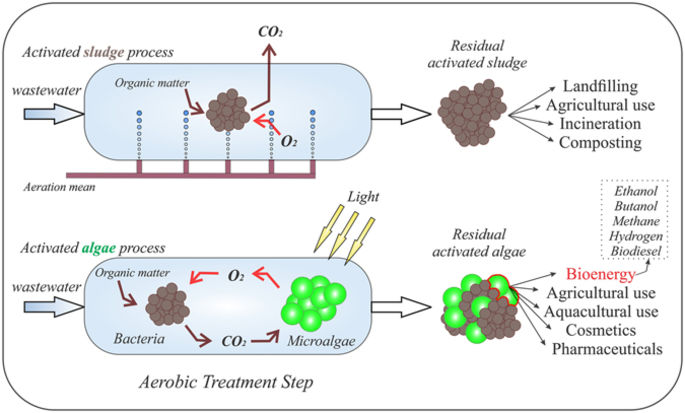Our official English website, www.x-mol.net, welcomes your
feedback! (Note: you will need to create a separate account there.)
Overcoming Microalgae Harvesting Barrier by Activated Algae Granules.
Scientific Reports ( IF 3.8 ) Pub Date : 2017-07-05 , DOI: 10.1038/s41598-017-05027-3 Olga Tiron , Costel Bumbac , Elena Manea , Mihai Stefanescu , Mihai Nita Lazar
Scientific Reports ( IF 3.8 ) Pub Date : 2017-07-05 , DOI: 10.1038/s41598-017-05027-3 Olga Tiron , Costel Bumbac , Elena Manea , Mihai Stefanescu , Mihai Nita Lazar

|
The economic factor of the microalgae harvesting step acts as a barrier to scaling up microalgae-based technology designed for wastewater treatment. In view of that, this study presents an alternative microalgae-bacteria system, which is proposed for eliminating the economic obstacle. Instead of the microalgae-bacteria (activated algae) flocs, the study aimed to develop activated algae granules comprising the microalgae Chlorella sp. as a target species. The presence of the filamentous microalgae (Phormidium sp.) was necessary for the occurrence of the granulation processes. A progressive decrease in frequency of the free Chlorella sp. cells was achieved once with the development of the activated algae granules as a result of the target microalgae being captured in the dense and tangled network of filaments. The mature activated algae granules ranged between 600 and 2,000 µm, and were characterized by a compact structure and significant settling ability (21.6 ± 0.9 m/h). In relation to the main aim of this study, a microalgae recovery efficiency of higher than 99% was achieved only by fast sedimentation of the granules; this performance highlighted the viability of the granular activated algae system for sustaining a microalgae harvesting procedure with neither cost nor energy inputs.
中文翻译:

通过活性藻类颗粒克服微藻收获障碍。
微藻收获步骤的经济因素成为扩大用于废水处理的基于微藻技术的规模的障碍。有鉴于此,本研究提出了一种替代性微藻-细菌系统,旨在消除经济障碍。代替微藻细菌(活化藻类)絮凝物,该研究旨在开发包含微藻小球藻(Chlorella sp。)的活化藻类颗粒。作为目标物种。丝状微藻(Phormidium sp。)的存在对于制粒过程的发生是必需的。游离小球藻的频率逐渐降低。通过将目标微藻捕获在细密且缠结的细丝网络中,可通过激活藻类颗粒的形成来一次获得细胞。成熟的活化藻类颗粒范围在600至2,000 µm之间,并且具有结构紧凑和显着的沉降能力(21.6±0.9 m / h)的特点。相对于本研究的主要目的,仅通过快速沉降颗粒就可以实现高于99%的微藻回收率。这种性能突出了颗粒状活性藻类系统在维持微藻类收获程序而无需成本或能量输入的情况下的可行性。
更新日期:2017-07-05
中文翻译:

通过活性藻类颗粒克服微藻收获障碍。
微藻收获步骤的经济因素成为扩大用于废水处理的基于微藻技术的规模的障碍。有鉴于此,本研究提出了一种替代性微藻-细菌系统,旨在消除经济障碍。代替微藻细菌(活化藻类)絮凝物,该研究旨在开发包含微藻小球藻(Chlorella sp。)的活化藻类颗粒。作为目标物种。丝状微藻(Phormidium sp。)的存在对于制粒过程的发生是必需的。游离小球藻的频率逐渐降低。通过将目标微藻捕获在细密且缠结的细丝网络中,可通过激活藻类颗粒的形成来一次获得细胞。成熟的活化藻类颗粒范围在600至2,000 µm之间,并且具有结构紧凑和显着的沉降能力(21.6±0.9 m / h)的特点。相对于本研究的主要目的,仅通过快速沉降颗粒就可以实现高于99%的微藻回收率。这种性能突出了颗粒状活性藻类系统在维持微藻类收获程序而无需成本或能量输入的情况下的可行性。


















































 京公网安备 11010802027423号
京公网安备 11010802027423号